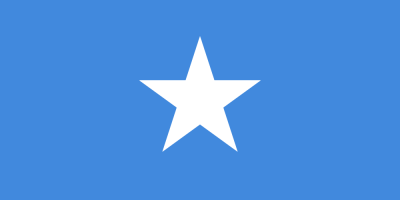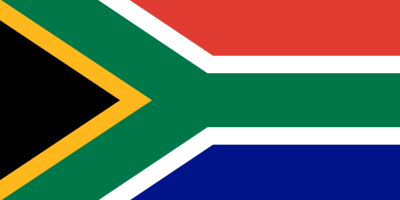Eritrea flag color codes features vibrant colors that represent the blood shed during the country’s long struggle for independence. The three colors – Eritrea flag color codes – are among the flag’s most symbolic elements. This article provides the specific color codes for the hues found on the Eritrean flag. You will find the HTML hexadecimal codes, RGB values, Pantone colors, HSL specifications, CMYK numbers, HWB combinations and NCOL codes for the exact red, green and blue shades comprising the national banner of this East African country.
Table of Contents
What are the colors of Eritrea flag?
The colors of the Eritrean flag are:
- Red: Represents the blood shed during Eritrea’s fight for independence from Ethiopia
- Green: Represents the agriculture and natural wealth of the country
- Blue: Represents the Red Sea on which the country lies
So in summary, the three colors are red, green and blue. They hold deep symbolic meaning for the history and national identity of Eritrea.
Eritrea flag color codes & Color Names:
BLUE
| Color Model | Value |
|---|---|
| HTML | #007A5E |
| HEX | 007A5E |
| RGB | 0,122,94 |
| PANTONE | 316 C |
| HSL | 168°, 100%, 24% |
| CMYK | 100%, 0%, 23%, 52% |
| HWB | 168°, 23%, 52% |
| NCOL | – |
RED
| Color Model | Value |
|---|---|
| HTML | #FFD100 |
| HEX | FFD100 |
| RGB | 255,209,0 |
| PANTONE | 1235 C |
| HSL | 45°, 100%, 50% |
| CMYK | 0%, 18%, 100%, 0% |
| HWB | 45°, 0%, 0% |
| NCOL | – |
GREEN
| Color Model | Value |
|---|---|
| HTML | #DA121A |
| HEX | DA121A |
| RGB | 218,18,26 |
| PANTONE | 186 C |
| HSL | 357°, 85%, 46% |
| CMYK | 0%, 92%, 88%, 15% |
| HWB | 357°, 15%, 15% |
| NCOL | – |
What is the meaning of colors in the Eritrea flag?
The colors in the Eritrean flag represent:
Red: The red color stands for the blood lost by Eritreans during their long struggle for independence from Ethiopia. It symbolizes the sacrifice and bravery of the citizens.
Green: The green color represents the country’s lush vegetation and agricultural resources. It points to the importance of cultivable land and crops to Eritrea.
Blue: The blue represents the Red Sea coastline of Eritrea. The country has an extensive coast along the Red Sea, which holds economic and transportation significance.
So in summary:
- Red = blood/sacrifice for independence
- Green = agriculture/fertile land
- Blue = Red Sea coastline
The vibrant colors evoke Eritrea’s natural landscapes as well as the self-determination and patriotism of its people. They are at the heart of Eritrean national identity.
Explore More Flag Colors:
- Grenada Flag Color Codes
- Djibouti Flag Color Codes
- Guinea-Bissau Flag Color Codes
- Uzbekistan Flag Color Codes
FAQs: Frequently Asked Questions:
Is Eritrea a rich or Poor country?
Eritrea is often considered one of the less developed countries in the world. It faces economic challenges, including limited natural resources, a largely agricultural economy, and the impact of past conflicts, such as the war with Ethiopia. The country has faced difficulties in terms of poverty, infrastructure development, and access to basic services.
What is Eritrea famous for?
Eritrea, located in the Horn of Africa, is known for several notable aspects:
Independence Struggle: Eritrea gained independence from Ethiopia in 1993 after a prolonged war. The struggle for independence played a significant role in shaping the country’s history and identity.
Diverse Cultures and Languages: Eritrea is home to various ethnic groups, each with its distinct culture, language, and traditions. The country’s cultural diversity is reflected in its festivals, music, and art.
Historical Sites: Eritrea has a rich archaeological and historical heritage. The port city of Massawa and the capital, Asmara, are known for their well-preserved Italian colonial architecture. Qohaito and Adulis are ancient archaeological sites of historical significance.
Red Sea Coastline: Eritrea has a long coastline along the Red Sea, offering beautiful landscapes and the Dahlak Archipelago. The coastal areas are known for their marine biodiversity and coral reefs.
What language do they speak in Eritrea?
Eritrea is a multilingual country with several languages spoken due to its diverse ethnic composition. However, there are three main languages that hold official status:
Tigrinya: This is the most widely spoken language and serves as the primary language of communication in various regions, particularly in the central and southern parts of the country.
Arabic: Arabic is another official language and is commonly used in the eastern regions of Eritrea, including in the city of Massawa.
What is the old name for Eritrea?
The region that is now known as Eritrea has a long history, and it was known by different names at various points in time. One of the historical names associated with the region is “Aksumite Empire” or “Kingdom of Aksum.” Aksum was an ancient kingdom that encompassed parts of what is now Eritrea and Ethiopia.
Additionally, during the colonial period, the territory of present-day Eritrea was known as “Italian Eritrea” when it was under Italian colonial rule from the late 19th century until the mid-20th century. The Italians called the region “Colonia Eritrea.”
Is Eritrea a safe country?
Eritrea has been known for its relative stability, but it’s essential to note that the situation can change, and travelers should always check the most recent travel advisories and updates before planning a trip.
Eritrea has experienced periods of conflict in the past, including a war of independence with Ethiopia that lasted for decades until Eritrea gained independence in 1993. Since then, the country has generally been more stable. However, political and security situations can evolve, and it’s crucial to stay informed about the current conditions.
How much Muslims are in Eritrea?
Approximately half of the population in Eritrea is estimated to be Muslim. The other major religious groups in the country include Christians, with various denominations such as Orthodox Christians, Roman Catholics, and Protestants.
It’s important to note that religious demographics can change over time, and the figures provided are approximate estimates. The government of Eritrea generally recognizes and respects religious freedom, and the country has a history of religious coexistence among its diverse population.
What is Eritrea main source of income?
Eritrea’s economy is primarily based on agriculture, with subsistence farming being a significant component. The country also has some natural resources, including fisheries and minerals. However, Eritrea faces economic challenges, and the overall economy is considered relatively undeveloped.
Agriculture, including livestock and crop cultivation, is a crucial source of income for many Eritreans, particularly in rural areas. The main crops include sorghum, millet, barley, wheat, and various fruits and vegetables.
Who rules Eritrea?
Eritrea is a one-party state, and the People’s Front for Democracy and Justice (PFDJ) is the ruling party. The country has been led by President Isaias Afwerki since Eritrea gained independence from Ethiopia in 1993.
Isaias Afwerki has been in power since the country’s independence and has played a central role in the political landscape of Eritrea. The PFDJ is the only legal political party in the country, and there are limited political freedoms and pluralism. Eritrea has been criticized for its human rights record, including restrictions on freedom of expression and political dissent.













